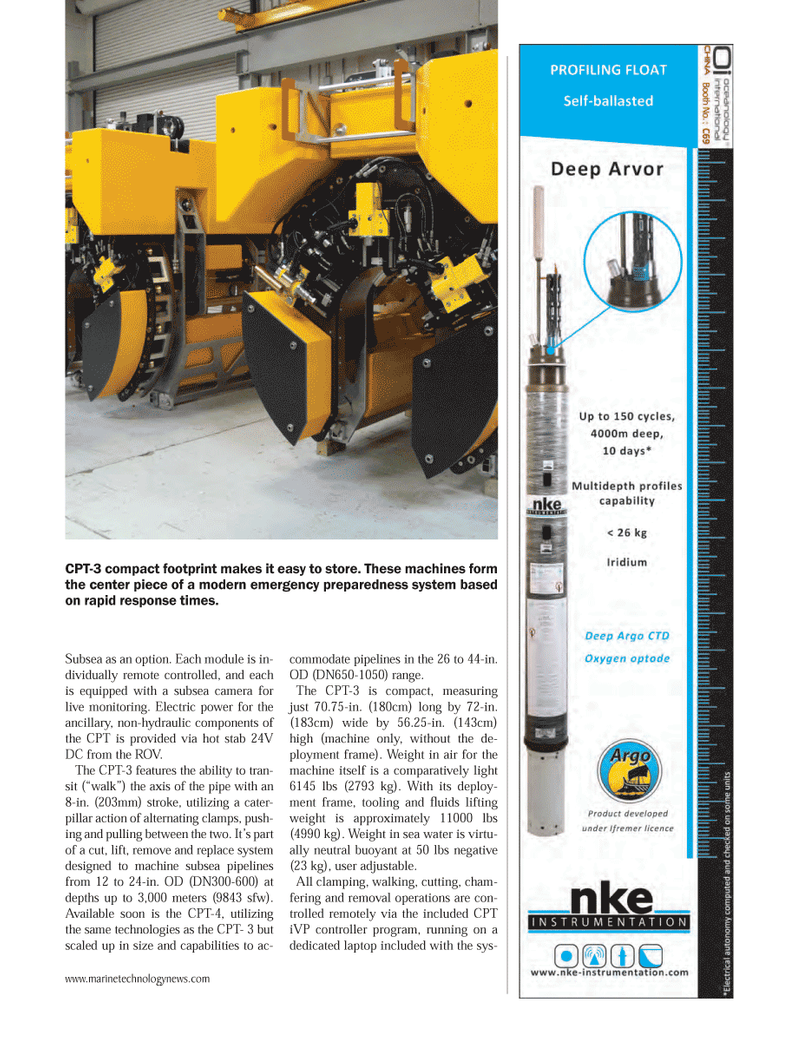
Page 53: of Marine Technology Magazine (September 2014)
Ocean Observation: Gliders, Buoys & Sub-Surface Networks
Read this page in Pdf, Flash or Html5 edition of September 2014 Marine Technology Magazine
Subsea as an option. Each module is in- dividually remote controlled, and each is equipped with a subsea camera for live monitoring. Electric power for the ancillary, non-hydraulic components of the CPT is provided via hot stab 24V
DC from the ROV. The CPT-3 features the ability to tran- sit (“walk”) the axis of the pipe with an 8-in. (203mm) stroke, utilizing a cater- pillar action of alternating clamps, push- ing and pulling between the two. It’s part of a cut, lift, remove and replace system designed to machine subsea pipelines from 12 to 24-in. OD (DN300-600) at depths up to 3,000 meters (9843 sfw).
Available soon is the CPT-4, utilizing the same technologies as the CPT- 3 but scaled up in size and capabilities to ac- commodate pipelines in the 26 to 44-in.
OD (DN650-1050) range.
The CPT-3 is compact, measuring just 70.75-in. (180cm) long by 72-in. (183cm) wide by 56.25-in. (143cm) high (machine only, without the de- ployment frame). Weight in air for the machine itself is a comparatively light 6145 lbs (2793 kg). With its deploy- ment frame, tooling and fl uids lifting weight is approximately 11000 lbs (4990 kg). Weight in sea water is virtu- ally neutral buoyant at 50 lbs negative (23 kg), user adjustable.
All clamping, walking, cutting, cham- fering and removal operations are con- trolled remotely via the included CPT iVP controller program, running on a dedicated laptop included with the sys-
CPT-3 compact footprint makes it easy to store. These machines form the center piece of a modern emergency preparedness system based on rapid response times. www.marinetechnologynews.com
MTR #7 (50-65).indd 53 8/27/2014 12:20:06 PM

 52
52

 54
54
